|
January 15, 2023
Dear Neighbors and Friends,
I hope that you and your loved ones are doing well, staying healthy, and looking out for your neighbors and friends during this past week.
Tuesday marks the real beginning of the 2023 legislative session, with our committees beginning to meet and legislators in Salem every day. Floor sessions will be limited to Tuesdays and Thursdays (starting at 11 a.m.) during January and February.
To help give you some tools to follow all the work that will be going on in the Legislature, his newsletter is full of information about bills, bill referrals, and committee work. You’ll also find info about who’s who on the new Governor’s staff.
You’ll also be able to read about the tour that a dozen of us legislators took this past week at the Oregon State Prison. And some exciting information about student access to Employment Related Day Care funding.
Oh yes, you can also read about our upcoming SD 23 Town Hall--together with returning HD 46 Rep Khanh Pham and brand new (!) RepThuy Tran.
On the COVID front, the news is overall positive here in Oregon. As you’ll see in the updates, graphs, and links, we’re continuing to see declines in all the COVID metrics, as well as in those related to Flu and RSV. The amount of COVID virus showing up in wastewater analyses appears to be declining again for now. Although 30 out of our 36 counties remain at Low Risk (unlike in many other parts of the country), one Oregon county—Malheur in far Southeast Oregon—has moved back into High Risk.
Oregon’s State Epidemiologist, Dr. Dean Sidelinger, gave his monthly press briefing a few days ago. He spoke to the declining rates we’re currently experiencing, but pointed to the ongoing stresses to our hospital system. You can read about it further down in the newsletter.
Until next week, please do your best to stay happy, healthy and safe. And let me know if you have any questions or thoughts about anything in this week’s newsletter.
COMING SOON: Joint Town Hall January 23rd
Now that session is underway, it’s time for the three SD 23 legislators to meet with constituents in our first town hall of the session. It will be on Monday evening, January 23rd, 5:30-6:30 p.m.
Reps Khanh Pham and Thuy Tran and I will go over our committee assignment and priority bills, and will provide our sense of how things are looking from the perspective of the House and the Senate. We’ll also try to answer as many of your questions as we can.
You can register online here. Please share your questions in advance when you register.
Looking forward to hearing what’s on your mind and discussing opportunities and priorities for our community in 2023.
I hope you can join us a week from Monday!

2023 Legislative Session: Bill Updates
Last week I mentioned that on Monday—organizing day—all 1,750 pre-session filed bills would be formally introduced. Then, over the course of the following days, they would be assigned (referred) to committee by the Senate President and Speaker of the House staff. And that’s exactly what has been occurring this past week.
Here again is a list of all the Senate and House bills that have been introduced so far in an easy-to-read format with links to the bill websites.
Again, I want to remind you that these are only initial legislative drafts. You can expect nearly all of them to be amended in some way over the course of the session. If a bill calls for a "study" of some sort, it is most likely (not always but generally) what we call a "placeholder" bill, one where a more specific proposal regarding that issue is being prepared. Stay tuned for that.
Staff began sending out the bill referrals on Wednesday. They’ve been coming in batches:
There are probably more coming. These lists are current through Sunday mornning. To find updates to the referral list, go to the Oregon Legislative Information System (olis.oregonlegislature.gov), select a day, then go to Today’s Publications, and there you’ll find links to that day’s referral list.
If you click on Cumulative Session Publications and then Joint Status Report, you’ll get an easy overview of any actions taken for each individual bill (date introduced, referred to committee, scheduled hearing, vote.). Here's the one already posted for Tuesday.
As you can see, OLIS is a great resource. If you’re interested in following the work of the Legislature, I’d suggest that you spend some time exploring it.
Oh, by the way, there are already 18 new Senate bills and 56 new House bills posted for First Reading on Tuesday.
Committees Ready to Roll
Committees will begin to meet on Tuesday morning. In a previous newsletter I provided the weekly committee schedule. Here it is in a more complete form, with Hearing Room assignments added.
You can see all the committee meetings for each day by going to that day in OLIS (olis.oregonlegislature.gov) and clicking on Meetings Today. Here's the list for Tuesday.
You can also get to the committee of your choice by clicking on the Committees tab.
You'll see that most committees will quickly begin holding public hearings on the bills that have been assigned to them. This year for the first time we will be taking public testimony on those bills in a "hybrid" manner--people will be testifying both in-person at the Capitol and online via Microsoft Teams. It is an exciting prospect and (in my opinion) long overdue; but there may be hiccups. Please be patient with us.
You can sign up to give oral testimony on any bill by going to the committee agenda for that day and clicking on the Register to Testify button next to the bill. Go to the bottom of the page and you'll see a link for submitting written testimony.
You can also go directly to the webpage for the bill (through the Bills tab on OLIS. Select the bill, then up at the top of the page you'll see links for Register to Testify and Submit Testimony.
Here' s more info on providing both kinds of testimony.
I mentioned last week that Representative David Brock Smith was the top contender to become the newest senator (following the resignation of Senator Dallas Heard on January 1). Indeed, David did win the appointment and will be sworn in on Tuesday. That will likely result in some shifts in committee assignments. (There may be more as well.) I'll let you know more next week.
Governor Kotek Announces Her “Office of Public Administration” Staff
At the same time that legislative committees are starting to do their work, the new Governor is working to get her office in order. Her key policy area leads will be working together as part of a new “Office of Public Administration.” According to a recent press release from the Governor’s Office, “The new office structure aims to strengthen partnerships between Governor Kotek and agency leaders, and increase accountability for improving customer service across state government.”
The press release provides the names and backgrounds of her designated lead advisors. Here are the names:
Deputy Chief of Staff: Chris Warner
Economic Development and Workforce Advisor: Vince Porter
Transportation and Infrastructure Advisor: Kelly Scannell Brooks
Senior Natural Resources Advisor: Geoff Huntington
Natural Resources and Climate Advisor: Karin Power
Wildfire and Emergency Response Advisor: Doug Grafe
Health and Human Services Advisor: Rachel Currans-Henry
Executive Appointments Director: Maya Crawford Peacock
Public Safety Advisor: Constantin Severe
Regional Solutions Director: Amelia Porterfield
Education Advisor: Melissa Goff
Federal Affairs Director: Annie McColaugh
Regional Solutions Coordinator: Courtney Crowell
Director of Corrections Ombudsman: Adrian Wulff
The Governor had already announced several other members of her leadership team in a January 9th press release: :
Deputy Chief of Staff for Public Engagement: Lindsey O’Brien
Director of Public Affairs and Communications: An Do
General Counsel: Richard Lane
Equity and Racial Justice Director: Becca Uherbelau
Legislative Director and Labor Liaison: Bob Livingstone
Several others were announced in another January 9th press release:
Education Initiative Director: Pooja Bhatt
Education Advisor: Melissa Goff
Behavioral Health Initiative Director: Annaliese Dolph
Housing Initiative Director: Taylor Smiley Wolfe
The Governor-elect had already announced back in December that Andrea Cooper would serve as her Chief of Staff and Abby Tibbs will be overseeing the preparation of her first budget. That budget is due to be delivered to the Legislature by February 1.
A Trip Inside the Oregon State Penitentiary
I mentioned last week that I’d be leading a bipartisan group of a dozen legislators into the Oregon State Penitentiary in Salem. OSP is Oregon’s oldest existing prison (opened in 1866). It was the first time legislators have been allowed inside a penitentiary since COVID first hit (and had devastating impacts on adults in custody and prison staff (6,153 AIC cases and 52 deaths; 2,075 staff cases and 3 deaths). The legislators were members of the Senate and House Judiciary and Health Care Committees; most of them had never been inside a penitentiary.
The tour focused on the situation of AICs with serious illnesses, including those at the end of life. We had the opportunity to meet and dialogue with AICs who have been working as caregivers in the hospice unit, some of them for more than a decade. As you can imagine, it is very difficult work, but so important. The AICs in hospice are individuals who had spent years working to improve and prepare themselves for their release date and then gradually had to confront the realization that they would never reach their release dates, that they would never live with their families again. Having fellow AICs there to help them get through their final days with love and compassion is extremely important, and hearing the hospice workers share their experiences with us was very powerful.
We were fortunate too to be joined by a staff member at the Oregon Justice Resource Center, a man who had himself been incarcerated for decades at OSP and whose sentence was commuted last year by the Governor. He had been one of the founding members of the OSP hospice program. It was great to see him welcomed back inside with obvious affection by the staff and AICs.
Several of us were also able to spend time with an AIC in hospice, a man in his 50s with a terminal cancer diagnosis. As you can imagine, he’s having a hard time both physically and mentally. The medical staff are working hard to support him as best they can, but dealing with this kind of situation inside a prison obviously adds additional layers of difficulty.
We’re hoping to bring together the legislators back together for a debrief later this week. Those who weren’t able to be part of the conversation with the hospice patient visited a section of the prison for AICs not yet at end of life but who need continual support to perform basic mobility, dressing, toileting, and eating. I’m curious to hear what that was like.
As I’ve mentioned, I’m sponsoring a bill this session that will improve our (currently dysfunctional) statutory process for compassionate medical release for those who are at the end of life or seriously, permanently incapacitated. It will create a standing outside medical board to review cases and advise the parole board on the seriousness of the AIC’s condition. It’s SB 520 SB 520.. It has been referred to the Senate Health Care Committee. I’ll provide more information about its trajectory in future newsletters.
Students Now Eligible for Employment-Related Day Care
During meetings that our Task Force on Student Success for Underrepresented Students in Higher Education had with students, we heard again and again about the difficulties student-parents are facing trying to juggle the responsibilities of school, work, and childcare. It is obviously a particular problem for students who are low-income and who need to upgrade their skills and education in order to enter or reenter the workforce. It’s preventing many Oregonians from pursuing post-secondary education.
This direct student testimony reenforced what we were hearing from experts in the field. One example of relevant research is a 2021 study from the Institute for Women’s Policy Research entitled “Child Care Access for Student Parents in Oregon: Challenges and Opportunities for Improving Educational and Economic Success.”
One of the challenges that the study illuminates is the difficulty that student parents have in accessing financial support from Employment Related Day Care (ERDC), a federal/state program designed for lower-income parents who are working. There have been many calls to make ERDC available to those who have left the workforce—or reduced their work hours—in order to attend class and do coursework.
As a result, one of the study’s key recommendations for improving student access was the following: The Oregon Department of Human Services should remove work requirements for parents in education and training to receive assistance from Employment Related Day Care (ERDC) and increase the share of ERDC funds that are used for contracts with campus- and community-based child care providers.
I’m happy to report that as a result of HB 3073 (2021), this recommendation has made its way into state law and as of January 1 is now in effect. You can read about it in this press release from the Department of Human Services, which oversees ERDC.
Here’s a link link to a DHS brochure explaining ERDC and a link to the DHS website that covers this program.
Here's reporting from the Oregonian and from KATU.
Please share this information with any parents that you know who are attending school or who are considering a return to school. If you have any questions, let us know.
Finally, I should mention that having the financial ability to access safe and high-quality childcare is a crucial first step. However, we did hear from students that even if they did receive a grant from their institutions or from the state that could have helped pay for childcare, they lived in a “childcare desert” that made it impossible for them to locate a center.
Providing student-parents with access to ERDC is a huge step forward, but it’s just one small piece of a larger puzzle of inadequacy. We need more childcare workers, and to that end we need to figure out how to pay them a living wage. We must get them the training that they need. We need to find more physical space for centers. These are all things that the 2023 Legislature will need to work on. A coalition of providers and advocates has come together to help lead that agenda. You can read more about that here.
ON THE COVID FRONT
Weekly Data Report:
OHA now updates and reports COVID metrics once a week, on Wednesdays. Here are the most recent set of weekly results, for this past week from 1/5//23 through 1/11/23.
As you’ll see, this week’s report shows declines in all of the metrics.
- The 7-day average for newly reported infections went down again last week, from 411 the previous week to 347 reported infections per day this last week. The number of new cases is again likely an undercount, as many people are using home tests to determine their infection status but are not reporting those results.
- Average test positivity went down during the last week, to 8.7% vs. the previous week’s 9.7%. Again, this number skews high because it likely reflects a higher proportion of people showing COVID symptoms (and thus reporting or going in for a test, rather than self-testing and never reporting).
- On Wednesday there were 261 COVID-19-related hospitalizations statewide, a small decrease from 342 last Wednesday. Hospitalizations are now our best indicator of disease spread. Again, however, most of these hospitalizations are not in and of themselves due to COVID—most are those who tested positive after having been admitted for other reasons.
- The number of COVID patients in Oregon’s ICUs on Wednesday went down last week, from 41 to 36. These are the most serious COVID infections.
- There were 54 COVID-19-related deaths reported during the last week, down from the previous week’s 62. Again, some of every week’s reported deaths actually occurred in earlier weeks but were just reported to the state, and others that likely occurred have yet to be reported. The newsletter’s final graph shows when the deaths actually occurred, and you’ll see that the number of COVID deaths each day continues to remain relatively low.
Weekly County Report: Nearly All Oregon Counties Remain at Low Risk But One Now at High Risk; Metro Region Sees Lower Positivity Rates
The CDC assigns risk levels based on a combination of the number of new COVID cases and the number of people in hospital for COVID.
According to the CDC Daily Counter (updated each Thursday), all but one Oregon counties are at either Low or Medium Risk. One county—Malheur in far southeast Oregon—is at High Risk, the first Oregon county to be at high risk for many weeks. As you’ll see below, wastewater analyses for Ontario (the largest city in Malheur County) have been showing sustained increases in COVID virus levels for the last few weeks. The CDC is recommending masking in indoor public spaces in High Risk areas.
Five Oregon counties (same as last week) have reported infection rates that place them in the Medium Risk category: Baker, Douglas, Grant and Lane.
The remaining 30 Oregon counties (down from 32 last week) are at Low Risk.
We can also track the cases, deaths, and test positivity rates for each county at this website.
Positivity rates for all three Portland-area counties went down last week. Clackamas County remains the region’s highest at 8.3% (down from 13.3% the previous week). Washington County is now at 9.4% (down from 10.3%). Multnomah County has declined significantly, from 9.0% the previous week to 6.5% this past week.
Remember that these are all based on reported test results, and so are more likely to be a little higher than the total percent positivity (i.e., if one were to include all tests taken).
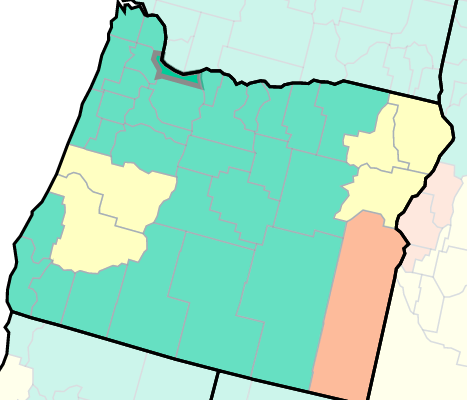 
This Week’s Wastewater Monitoring Report: Back to Declining Levels
With testing reports giving us just a fraction of infections out there, wastewater monitoring has become a more reliable indicator of the amount of virus in cities around the state. That report is updated each week.
This week’s report, updated on Wednesday, shows more cities with declining levels. As you’ll see, 23% of the cities observed showed decreases or sustained decreases last week (way up from 3% the previous week). Nine percent showed an increase or a sustained increase (down from 16% the previous week). Sixty-eight percent showed no change (down from 81%).
Corvallis and Sunriver are the cities showing sustained increases last week.
By the way, as you’ll see in the item immediately below, we learned from the State Epidemiologist in a recent briefing that there is a lag of several weeks in reporting and processing wastewater analysis data from some cities. Its real value, he argued, is in the trends that it shows, rather than as a snapshot of the moment.
State Epidemiologist Provides COVID Briefing: Declining Rates, Ongoing Hospital Stress
Oregon’s State Epidemiologist, Dr. Dean Sidelinger, provided an update on COVID, RSV, and Flu in Oregon in a press conference on Thursday. Dr. Sidelinger confirms that rates are dropping, but the strain on hospitals continues.
Dr. Sidelinger went into detail on the declines in respiratory cases, along with the ongoing stresses. He reported that the XBB.1.5 subvariant is not yet prevalent in Oregon (it is in the nation as a whole), but expects that it will increase here. However, although highly transmissible, it is not more dangerous than other variants. He thanked Oregonians for being careful during the holidays, which he believes has made a difference.
Dr. Sidelinger also had positive news to share regarding the big declines in MPox cases.
Responding to a reporter’s question, Dr. Sidelinger did confirm that there is a lag of several weeks in reporting and processing wastewater analysis data. Its real value, he argued, is in the trends that it shows, rather than as a snapshot of the moment. The lag varies from site to site.
A recording of the briefing is available via YouTube at this link. You can find Dr. Sidelinger’s prepared comments at this link.
Here's reporting on the briefing from OPB.
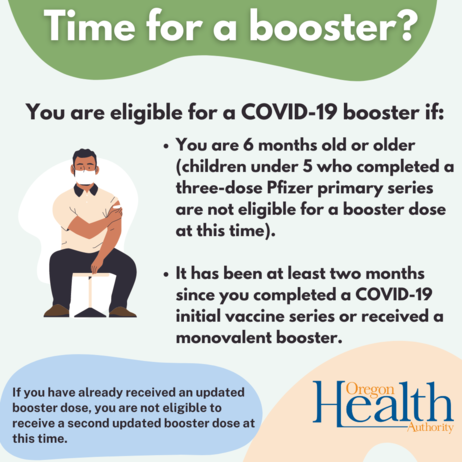
COVID Q & A from OHA (from OHA weekly newsletter)
Dr. Paul Cieslak, OHA senior health advisor and medical director, Communicable Diseases and Immunizations answered this week’s questions.
Q: Since physicians are urging everyone to wear masks in crowded indoor places to protect children, why haven’t there been any recommendations to wear masks in schools? – Patti, Sherwood
A: “Wearing a mask offers a person good protection from COVID-19, the flu, RSV and also other respiratory viruses. If you are sick, I encourage you to stay home, but even then, if you are around others, wearing a mask will help protect them. With respiratory viruses circulating at high rates throughout Oregon, I recommend wearing masks in crowded indoor spaces. For students, teachers and staff this may include schools. Individual students and their parents should look at their own risk factors and may consider wearing a mask, for now, in schools. OHA worked with the Oregon Department of Education to provide this guidance to schools as they communicate with families and staff about increased illnesses in their communities and to encourage people in schools to consider wearing masks to support health and in-person learning for their entire school community.”
Q: My husband and I received our 5th COVID-19 vaccine Sept. 22. Should we be getting another six months from then? I've read about the new strain and wonder if there will be a new vaccine targeting that or if we should just get an additional booster. Thank you. – Wendy, Eugene
A: “If your most recent vaccine was the bivalent booster (which it was since no other booster was available starting Sept. 2), no additional COVID-19 vaccine doses are currently authorized for you. Time will tell whether new variants or post-booster waning of immunity are leading to serious illnesses and hospitalizations; in the event that they are, the U.S. Food and Drug Administration and Centers for Disease Control and Prevention may indeed recommend another bivalent shot in the coming months.”
Q: Do you have any ideas for help with problems with nose running under KN95/KF94 masks? I've tried various allergy tablets and use a nasal inhaler (fluticasone), and I have tried Afrin. Because I have to go outside often to blow my nose, I've not been able to see my doctor nor get my hair cut. – Lynn, Eugene
A: “Sorry that you’re having this problem – it's a tough issue. If your nose running is due to allergic symptoms, either from seasonal allergies or from something in the mask, you could ask your doctor about potential treatments, of which several are possible, and maybe they will agree to see you via video call. Otherwise, I wouldn’t advise that you medicate it. In particular, one shouldn’t take oxymetazoline (Afrin) for more than three days.”
Additional COVID Updates and Links



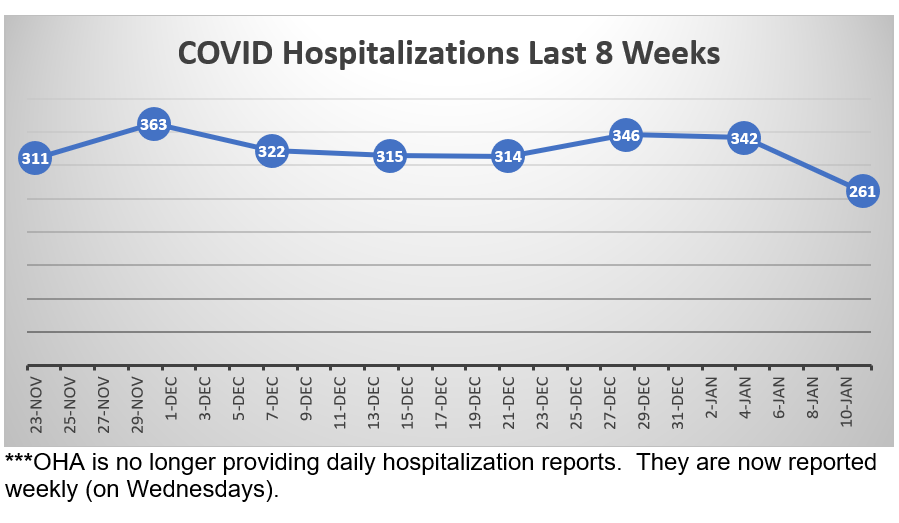
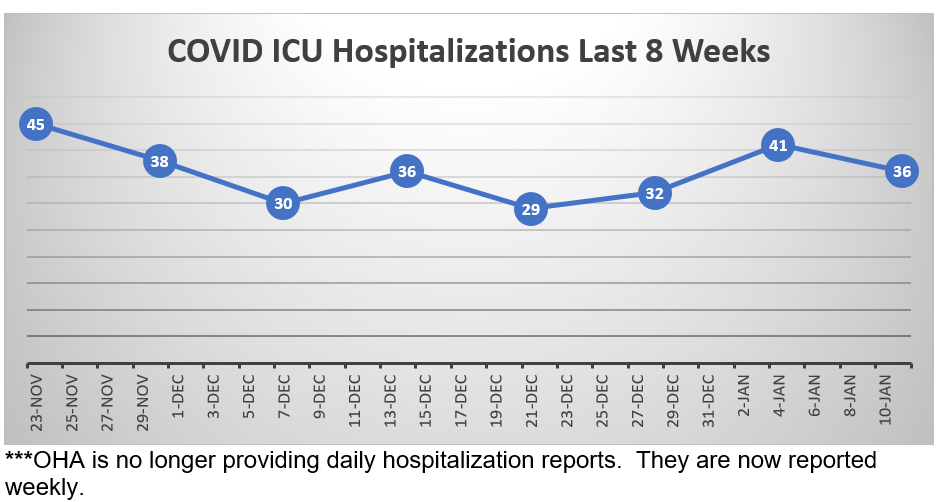
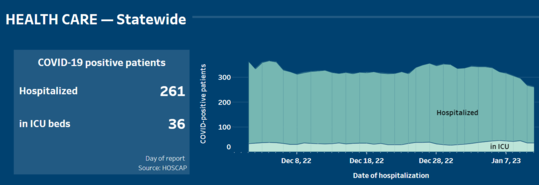
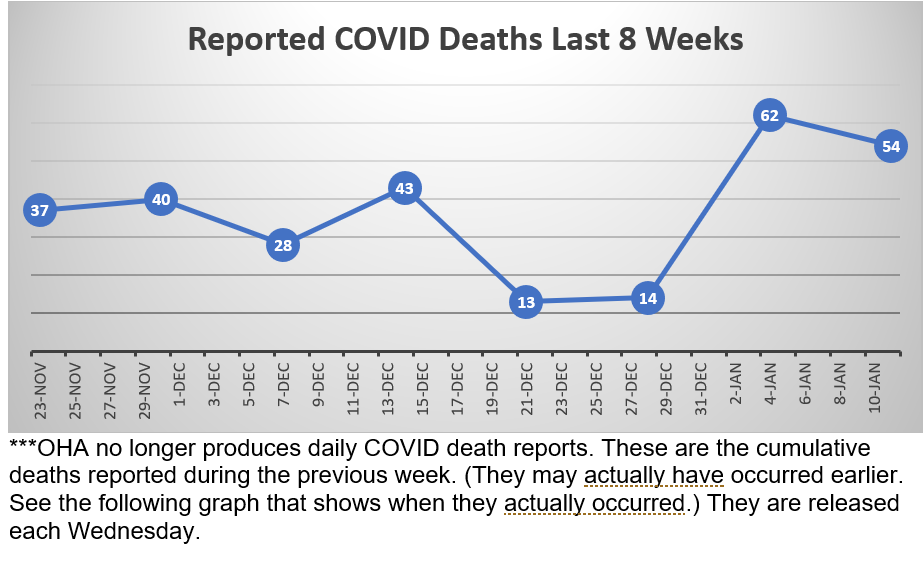

Here again are some COVID resources that you will find useful:
If the above links are not providing you with answers to your questions or directing you to the help that you need, please consider me and my office to be a resource. We’ll do our best to assist you or steer you in the right direction.
Want to See Past Newsletters?
If there was COVID-related information in a past newsletter that you want to go back to, but find you’ve deleted it, you can always go to my legislative website (senatordembrow.com), click on “News and Information,” and you’ll find them all there. Also, if someone forwarded you this newsletter and you’d like to get it directly, you can sign up for it there.
Best,
 Senator Michael Dembrow
District 23
email: Sen.MichaelDembrow@oregonlegislature.gov
web: www.senatordembrow.com
phone: 503-986-1723
mail: 900 Court St NE, S-407, Salem, OR, 97301
|